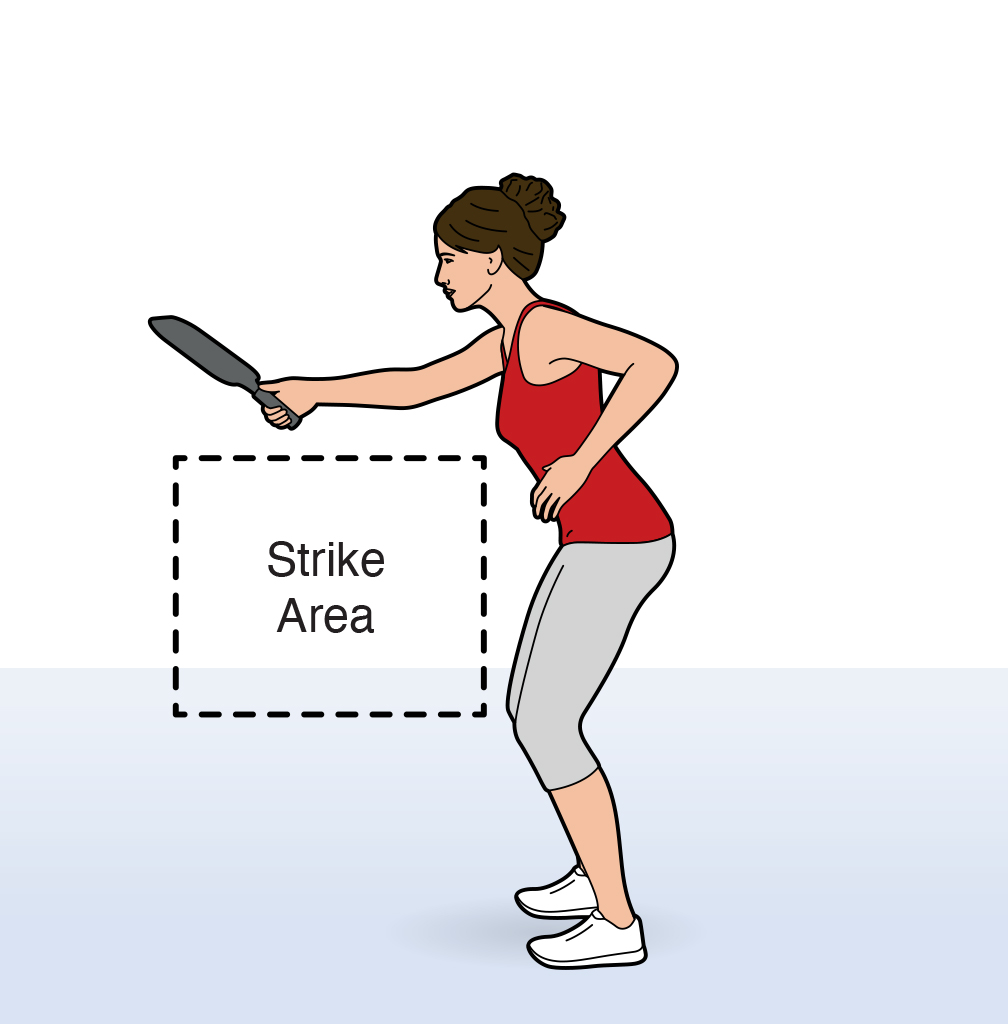Dinking Done Right
inpickleballme
on
May 12, 2022

DINKING DONE RIGHT
Coach and award-winning player Sarah Ansboury shows you how to master the shot.

“Dinking is about much more than simply slowing down the game,” says Sarah Ansboury, who holds the distinction of winning five medals at the first-ever US Open Pickleball Championships in Naples, Florida, in 2016. In fact, it’s the most offensive move you can make, according to Ansboury, who is also a coach.
In eight years of competing at the highest level, Ansboury has studied the game from all angles. “We utilize dinking to soften the ball, but what it’s really about is creating an opportunity,” she explains. Though most players lightly bounce the ball back and forth over the net, Ansboury guides her students to dink as though they’re hitting a low ball that’s below the net, essentially lifting the shot. “When you hit a low ball nice and slow, you’re lifting your shot so your paddle can finish above the net. Now, if your opponent gives you a high ball, you can turn your paddle and attack the next ball,” she says.
POSITION YOURSELF FOR SUCCESS
We worked with Ansboury to curate two dinking drills—one offensive, and one defensive, with the latter geared toward helping players maintain the right positioning. (You can also check out Ansboury’s excellent instructional videos at sarahansboury.com.) For these drills, line up your knees, toes, and hips so that they’re facing 12 o’clock, with “your paddle way out [your arm should be outstretched], pointing toward your opponent,” she advises.
Visualize a small circle and keep your feet within it. “You’ll learn to reach and extend with your upper body and try to keep your chest up,” Ansboury says. “It’s amazing how much keeping your feet together helps you follow through. Staying within the circle gets you in the habit of pivoting and stepping to the ball.”

SARAH ANSBOURY is a four-time USA Pickleball National Championships medalist and a coach who teaches on the road and at Palmetto Dunes Oceanfront Resort on Hilton Head Island in South Carolina.
OFFENSIVE DRILL
1

GET A GRIP
Don’t deathgrip the paddle. You want it nice and soft and loose, and you shouldn’t feel any tension in your arm, Ansboury says. Hold the paddle mainly with your top fingers—think of the top of your paddle as an extension of your fingertips. Your bottom fingers should play a simple supporting role.
2

JUST PUSH IT
As your partner feeds you balls, think about creating a long push. It’s important to keep this easy tempo—you want to be super loose and relaxed. That’s what keeps the ball soft. You’re trying to engage your shoulder, not your wrist and elbow.
3

MORE FORE
One key strategy, especially for recreational players, is to hit more forehand shots. When most players dink off their backhand, they bend their elbows so much that they connect with the ball too late, Ansboury explains. Having the paddle in front of you, trying to make contact with the ball above your knees in a forward position, is really what sets you up for a successful dink.
4

SET TARGETS
Place targets (Ansboury likes to use circular ones about the size of a vinyl record) in the corners of the non-volley zone, and also one on the inside. Open your body toward the middle of the court so you can cover both of your angles. Keep your toes and your hips forward, which will allow you to cut off the ball in a forward position, instead of getting caught on your heels and popping it up.
DEFENSIVE DRILL
1

FEEL THE BALL
Put down your paddle and have your drill partner toss you a ball from the other side of the net. Catch it, look at the ball, and see where your fingertips are. If it’s a high ball, you’re going to catch it on top of the ball. Then toss it back so that your fingertips are open and facing your target. You’re using your fingers to think about where the ball is.
2

NOW USE YOUR PADDLE
Stick your paddle out, drop the ball, and push it to your partner. As you rally back and forth, try to keep your paddle in-line forward. Keep your other hand in the air, close to your heart, or on your dominant shoulder—this will give you a lot of support, Ansboury says. When you’re hitting the ball over a net, your hands need to be in front working together.
3

PREP FOR ACTION
To toss the ball to your target, you want it to roll off your paddle, typically underhand. Stay fluid, holding your paddle toward the target, so that you’re ready for the next ball.
4

FINISH NATURALLY
One of the big mistakes players make: They’re so focused on bringing their paddle back to ready position, it prevents them from hitting the return ball, Ansboury says. Instead, when you finish your shot, rather than snapping back to 12 o’clock, be ready to move your paddle wherever you think the next ball will go.
- Category: Articles, In-Struction, ON THE COURT
- Tag: Dinking, Howto, In-Struction, Inpickleball, Instruction, Onthebounce, Pickleball, Sarahansboury

